Houseplant Care Guide: Everything You Need to Know to Take Care of A Houseplant
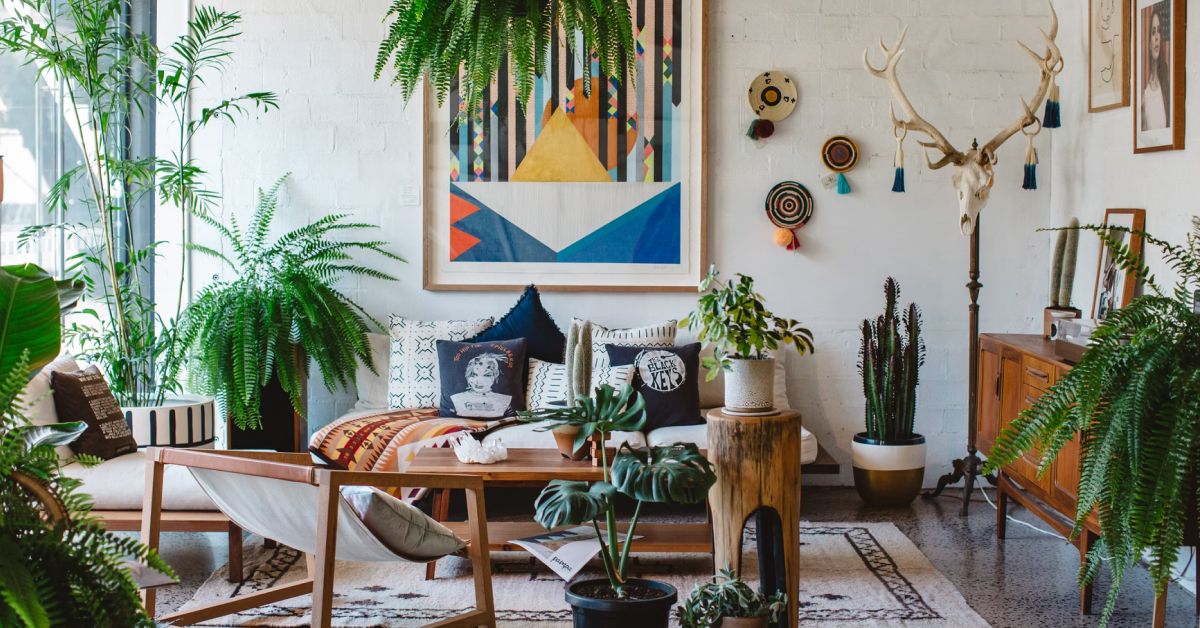
This is our houseplant care guide for beginners to get you started with your houseplant-growing adventures.
If you want to add plants to your home but are intimidated by the process, you’re not alone.
That said, taking care of plants isn’t as hard as it sounds. In fact, you can start to see results in as little as a week.
There are a million and one ways to take care of houseplants, but they all basically follow the same steps: buy a plant, give it water, feed it, and put it somewhere with enough light.
That’s pretty much it.
Not only are houseplants good for your health (they remove airborne toxins from the air), but they can also make your home more comfortable.
In this post, I’ll show you how to get started with houseplants.
In this indoor plant care for beginners guide, you will learn the following:
- What is a houseplant?
- What are the benefits of growing a houseplant?
- How to take care of your houseplants?
- And a lot more!
So, let’s jump right in.
What is a houseplant?
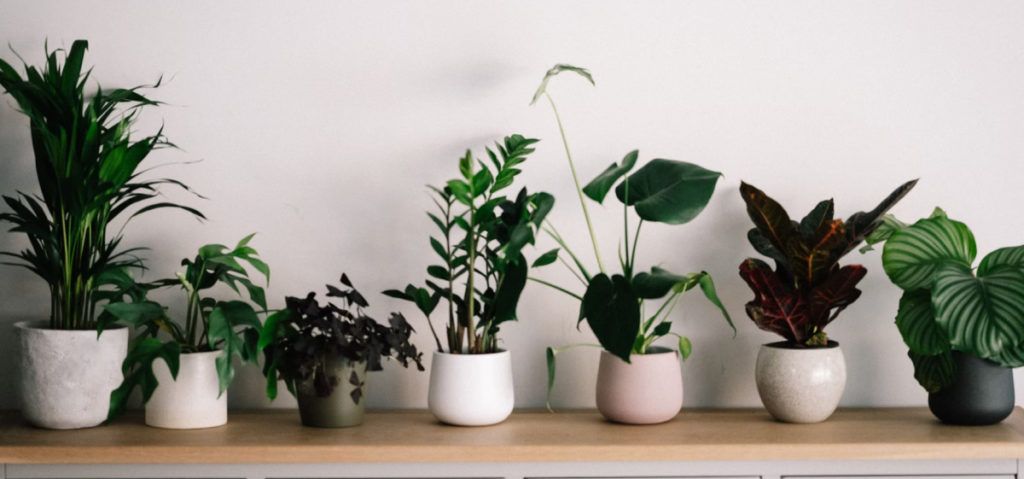
Indeed, What Is a houseplant?
A houseplant, also known as an indoor plant, potted plant, or just plain plant, is any plant that is kept inside a container and placed on a surface, like a table or a countertop.
In brief, a Houseplant is a plant that you keep inside your home.
The most well-known houseplants are probably ferns and cacti, but there are literally hundreds of different types of plants that can thrive inside.
Compared to trees and bushes, houseplants are relatively easy to care for and maintain.
In fact, the only fundamental requirements for keeping a plant indoors are water, sunlight, and soil.
So if you want to add a little greenery to your home, a houseplant is the way to go.
There are many reasons why people choose to keep houseplants inside their homes.
Let’s take a look at some of the top reasons why people keep houseplants.
What are the benefits of having indoor plants?
The obvious benefit of having indoor plants is the beautiful and vibrant greenery you get inside.
But there are actually a handful of other benefits that you may not have heard of.
Here are a few of the most common benefits of growing a houseplant.
Houseplants make it a little easier to breathe
As we know, when we breathe, our body absorbs oxygen and let out carbon dioxide.
Obviously, plants absorb carbon dioxide and emit oxygen as they breathe. Therefore, houseplants can help you breathe easier by increasing the amount of oxygen in your home.
Some plants like the orchids and succulents can even help you sleep better at night.
This is because they absorb carbon dioxide and release oxygen at night!
You can put these plants in your bedrooms to increase the oxygen levels in your bedroom
at night. This helps you to relax and fall asleep faster.
Houseplants help to filter the air
Another great reason to keep houseplants in your home is that they can remove airborne toxins from the air.
Many people don’t realize this, but plants actually remove airborne toxins from the air.
According to a NASA experiment conducted in 1989, a plant can eliminate about 70% of airborne toxins in an environment.
Plants also absorb volatile organic compounds (VOCs) that contribute to the “off” smell of old books, electronics, and clothes.
So this makes a houseplant an excellent air purifier.
Keep in mind that the amount of pollutants that a plant can remove depends on several different factors, like the type of plant and the size of your room.
But all in all, plants are a surprisingly effective way to clean the air inside your home.
Houseplants help you to add moisture to your home
Another great benefit of growing a houseplant is that it adds moisture back into your home.
This is because houseplants release water as a vapour through their leaves.
In fact, houseplants are estimated to release approximately 97% of all the water that they absorb into the air as vapor.
This is especially important during the dry winter months.
When you have a plant in your home, they will continuously release water as they breathe, which will keep your indoor spaces moist.
You don’t have to spend money to buy a humidifier or fancy misting systems. Just keeping a few houseplants is enough to keep your indoor spaces humid.
As a result, problems caused by dry air, like dry skin and nose and throat irritations, are significantly reduced by just keeping some houseplants.
Houseplants help you to relax and reduce stress
Having a couple of houseplants can also help you to relax and reduce stress.
A recent 2015 study shows that people who regularly interacted with indoor plants may have a lower level of psychological and physiological stress.
Accordingly, many experts advise keeping potted plants near your desk to reduce discomfort and noise.
There’s scientific evidence that potted plants at work can improve employees’ well-being, including their mental state and stress levels.
This is why it’s a good idea to keep potted plants in your because they can reduce stress, helping you to work more efficiently.
Houseplants have healing properties
Many of the houseplants have healing powers.
For example, Aloe Vera, a popular and low-maintenance houseplant, has been known to be very effective in treating wounds and burns.
What’s more, a study back in 2008 found that plants help patients recover more quickly after surgery.
Kansas State University researchers discovered that patients recovering from surgery who had plants in their rooms needed less pain medication, had lower blood pressure and heart rate and reported less worry and exhaustion than those who did not.
How do you take care of a houseplant for beginners?
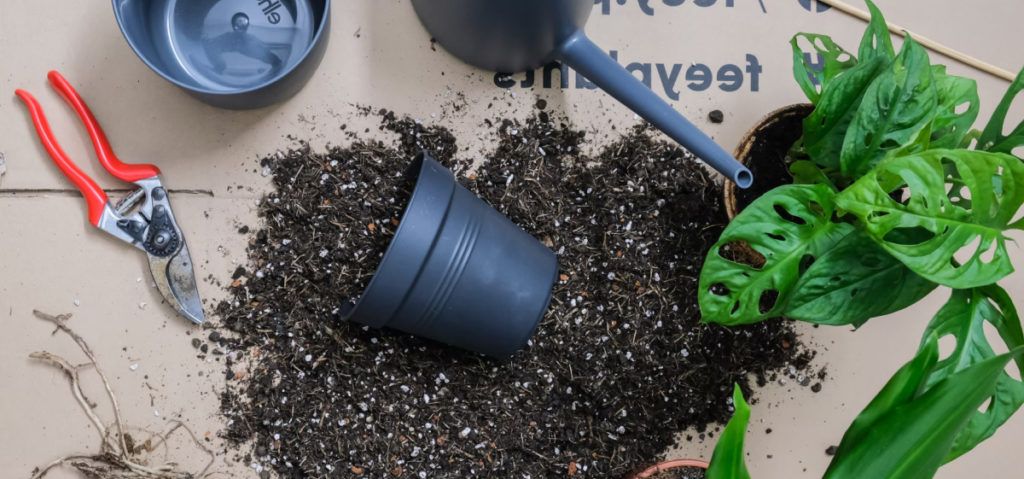
Now, you probably think you’ll need a PhD in plant biology to properly take care of a houseplant.
But that’s actually not the case. In fact, taking good care of a houseplant is actually pretty simple.
All you need to do is provide the following 4 essentials to keep your houseplant alive and healthy: Light, Water, Soil, and Temperature.
Here are some plant care tips for beginners to keep in mind when it comes to taking care of your houseplant.
Tip #0: Choose houseplants that match you
Before we begin with the actual tip, it is VITAL that you choose a houseplant that matches your lifestyle.
On the whole, houseplants that require less water and care are more resilient to life’s minor hiccups.
For example, my morning coffee and tea habit mean I need a plant that likes to be watered in the morning.
Also, consider your work hours. Do you have a set work schedule that matches plant watering times? Or do you travel a lot for your job?
Plants that like to be watered at certain times of day are easier to schedule into your routine.
This step is essential, especially for beginners, as there are A LOT of different plants to choose from. So it’s essential that you pick the right one for YOU.
Tip #1: Light is food for your plants
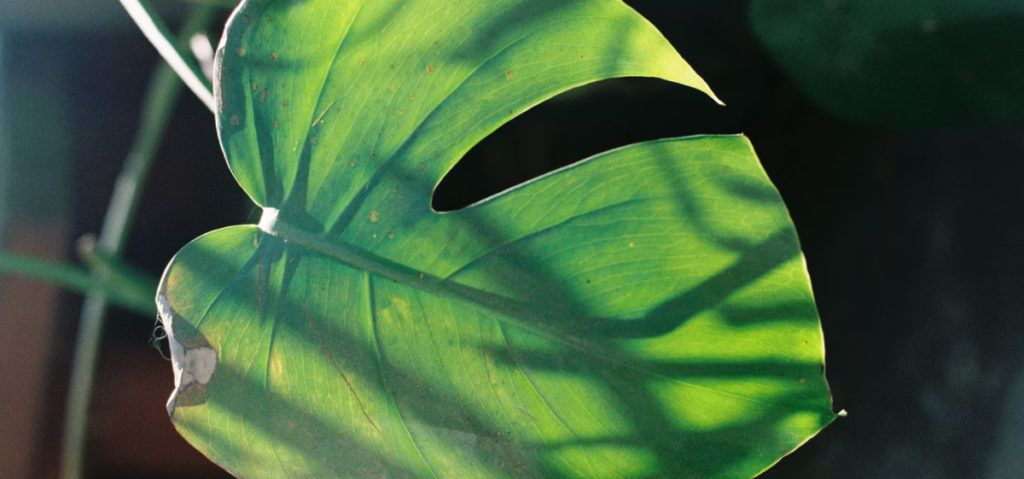
Plants need light to grow. Your houseplant gardening success will depend a lot on giving your plant enough light.
Plants create their own nutrients with the help of the sun. Therefore light source is vital.
That said, too much light can stunt plant growth.
The amount of light your plant needs depends on the plant’s stage of development.
New plants have leaves that are only a few millimetres wide. As the plant matures, the leaves get wider and taller.
You can quickly tell how much light your plant needs by looking at its leaf.
In fact, you can tell how much light a plant needs based on the color of its leaves.
Green leaves mean the plant is getting sufficient light. But if the leaves start to yellow or brown, then the plant needs more light.
Bonus tip: If you’re not sure where to put your plant, take a picture of it with your smartphone and check the exposure.
If it’s too dark, the plant will need more light. If it’s too bright, the plant may need a shadier spot.
You should also check where your light source is coming from. You can do this by checking your windows’ orientations.
By comparison, south-facing windows provide the most light, east/west-facing windows provide moderate light, while north-facing windows, on the other hand, will give you the least amount of light.
If you want to take things a step further, some apps measure how much sunlight your plant receives from your window.
As a general rule of thumb, most houseplants prefer bright, indirect sunlight.
But again, this depends on the plant. Some plants, like spider plants, like low-light.
Tip #2: Master the water
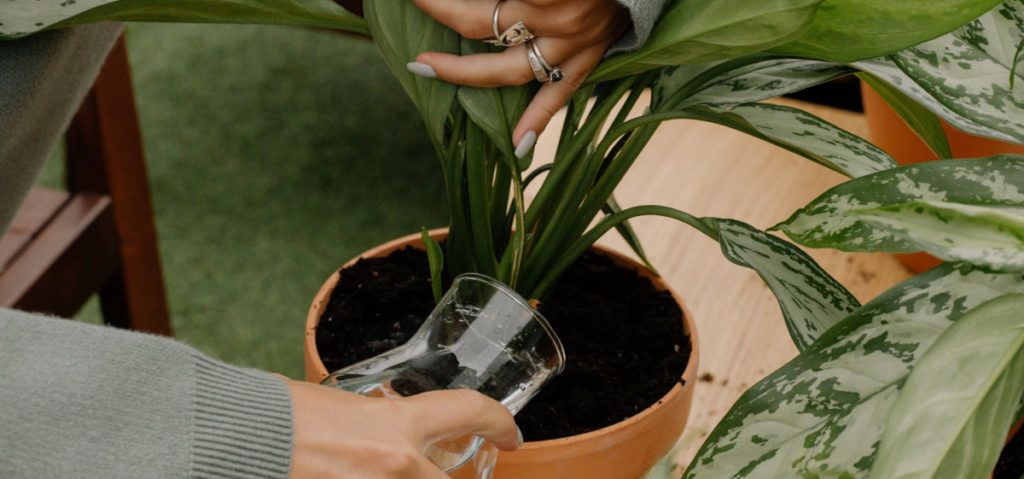
Water is the lifeblood of your plant. Without it, your plant won’t survive. Watering is a vital part of taking care of a houseplant.
Unfortunately, watering is the number one plant killer.
You can easily kill a plant by overwatering. This leads to root rot and other problems.
To be clear: you should water your plant regularly. But how often is enough?
Well, where do you put your houseplants will affect their watering needs.
Light, temperature and humidity will affect how often you should water your plant.
Different types of plants have different watering needs. Because each plant is unique, each one must be evaluated individually to determine whether or not it needs additional water.
Making a habit of inspecting your plants regularly is highly recommended.
Here’s a tip: By inserting your finger into the potting soil of your houseplant, you may determine whether or not it needs water.
If your potting soil feels moist to the touch and some of it stuck to your finger, your houseplant has enough water.
Whereas If the soil feels dry, add a little bit of water until it’s damp. It’s preferable to keep it slightly moist.
Plants with wilting leaves is usually a symptom of a plant that is thirsty. If you notice leaves starting to wilt, give your plant a drink.
Watering your plant should be a gradual process. Watering in bursts can lead to root rot.
This is why you want to master the water requirement for each of your houseplants.
Tip #3: Select Your Soil Carefully
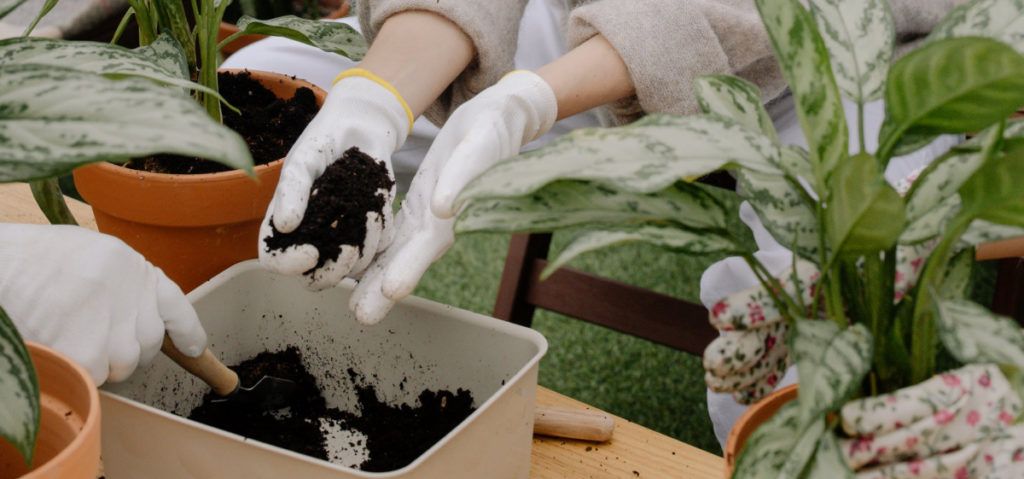
Soil is another crucial element in taking care of your houseplants. Like with watering, there’s a right and wrong way to select soil for your plants.
As a general rule of thumb, your houseplant’s soil needs to:
- Contain enough organic matter to retain water and nutrients
- Be of a proper pH level
- Have a high drainage rate
- Be rich in micro-nutrients
- Have sufficient air space
- Not be too acidic or alkaline
- Be free of weed seeds and pests
In short: the soil you use for your houseplant is super important.
A large selection of ready-made soil mixes usually can be found in the garden center.
A tip for beginner plants parents: always ask for help from the experts in the garden center where you buy your houseplants.
They’ll usually point you towards the best soil mix for your plant.
The type of soil you use depends on the plant’s stage of development and the climate where your plant lives.
For example, ferns and succulents need very specific soil conditions.
Calathea and ferns, for example, prefer their soil to be moist for extended periods and do not thrive when it dries up too rapidly.
A soil composition for ferns should be completely different from cacti, which cannot tolerate prolonged wetness.
Tip #4: Keep an eye on the temperature and humidity
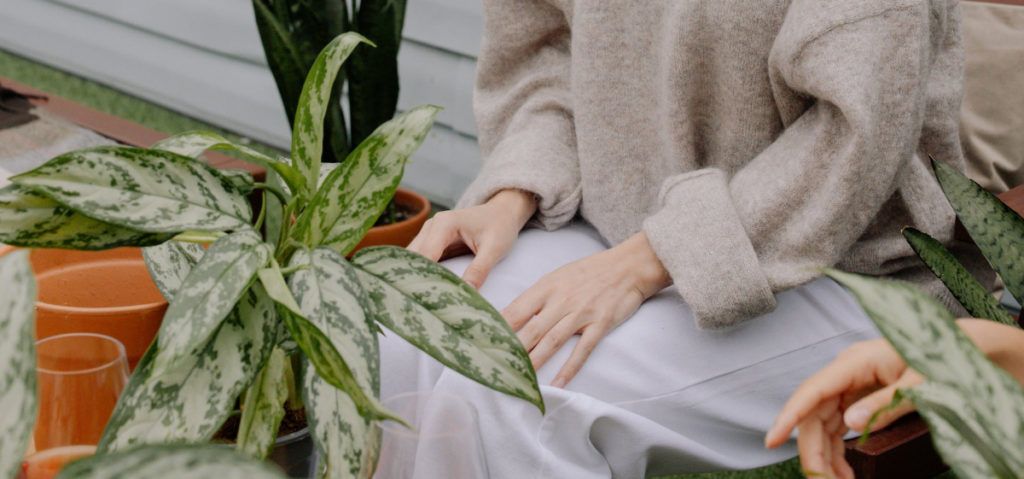
Temperature and humidity are two factors that can impact the health of your houseplant.
Most beginners don’t pay attention to their houseplants’ environment until they notice something’s wrong. By then, it’s usually too late.
Because most houseplants are native to tropical and subtropical climates, they are sensitive to cold temperatures.
High temperatures can lead to leaf yellowing and wilting. And low temperatures can stunt growth.
Generally speaking, the lowest temperature your houseplants can tolerate safely is around 55° Fahrenheit.
As a general rule, I would suggest that you avoid exposing your plants to harsh temperatures.
A few houseplants may even tolerate extreme temperatures, but that does not always imply that they are having fun.
Humidity is also important. Too much or too little can lead to wilting. So make sure your home is well-humidified.
Low humidity can also stress out houseplants. This is because low humidity causes leaves to lose water, which leads to them getting smaller.
Too much humidity is just as bad. Excessively moist soil promotes the development of mold, which can damage your plant’s leaves.
In short: The relative humidity in your house will have an impact on how well your plants develop, the sort of growth they produce, and how frequently you see new leaves.
All in all, it can make or break the health of your houseplant.
So make sure your house is well-humidified, and take a look at your plant’s environment once in a while. You may notice that the temps or the humidity are off.
Then, do what you can to adjust things so your plant can flourish.
Bonus tip: Invest in a good hygrometer. It is a helpful tool for keeping tabs on the air and soil moisture levels in your house.
You can use a hygrometer to figure out if your house is too dry, too wet, or just right.
Tip #5: Watch out for pests and diseases
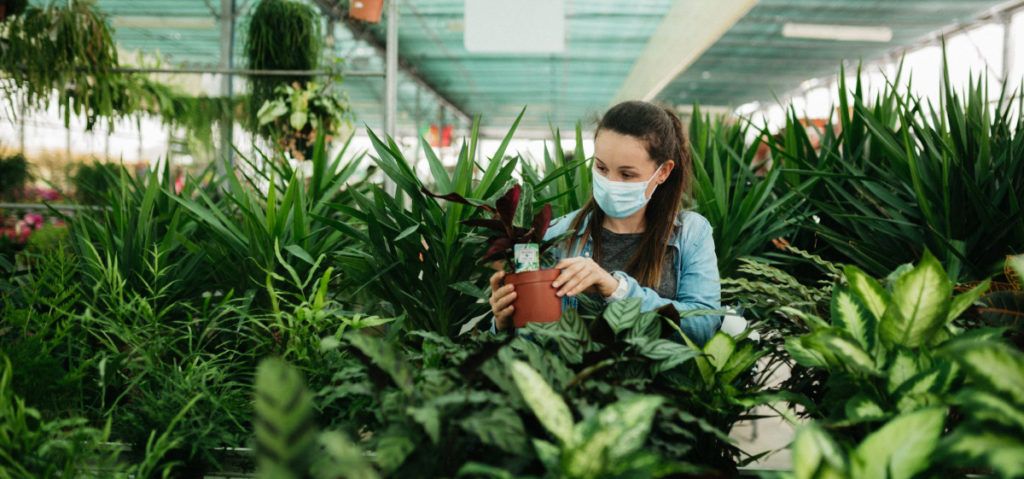
Pests and diseases are common problems for your houseplants.
Keep in mind that your houseplants will be threatened by pests or illness (or both) at some point throughout their lifetime.
However, don’t worry, as these issues do not reflect poorly on you.
The most common problems are mealy bugs, aphids, mites, spider mites, scale, whiteflies, and fungal diseases.
Fortunately, many of these problems can be identified and controlled with relative ease.
You can avoid significant infestations by examining and maintaining your plants. Make sure every time you water a plant that nothing has moved in since you last checked.
Pests and diseases may be controlled effectively by catching them early before they spread.
Generally, there are two commonly used methods in controlling pests and diseases.
Typically, most plants parents will use either chemical insecticides or organic sprays to control pests and diseases.
Both work, but I would recommend using organics as long-term control measures are more reliable.
Organic sprays are safe for kids and pets and don’t damage the environment. They also have a longer-lasting effect than conventional pesticides.
However, organic sprays usually cost 3-5x more than conventional pesticides.
Chemical insecticides are cheap and effective.
Just keep in mind that you need to keep them away from children and pets and follow the label’s directions properly.
As you can see, pests and diseases can quickly turn your plant into a sad, sickly thing. So it’s important to keep an eye out for these problems.
Bonus Tip: Use a magnifying glass to examine your plants. It’s helpful for identifying insects and diseases that are hard to see with the naked eye.
I personally use a magnifying glass to inspect my plants regularly. That way, I can catch any issues early.
You should also keep a lookout for unusual growth or color changes. This could be a symptom of a pest or disease.
Sometimes the best way to identify a pest or disease is to compare your plant to photos online. If you find something that looks similar, then you probably have the same issue.
Here’s a great resource if you want to identify pests and diseases of your houseplants: Common Houseplant Insects and Related Pests.
It covers the major pests and insects that can potentially harm your houseplants.
How do I start a houseplants garden?
You can start a houseplant garden in your space by planting your houseplant from seeds.
Planting seeds allows you to see a plant grow from seed to maturity, allowing you to monitor it at every step.
Growing plants from seed are particularly popular with vegetables and flowers, owing to their rapid growth after sprouting.
Purchasing seeds from a trustworthy supplier allows you to start from scratch and cultivate your own houseplants.
However, this is not always recommended for beginners. Since you rely on the seeds to germinate, you may have to wait several months before seeing results.
Also, you will need to keep an eye out for the right time to sow your seeds.
Since it’s more work, you may want to consider starting your plant from a cutting.
This is what I would recommend for beginners trying to start their first indoor plants garden.
Buying your first houseplant can be overwhelming. There are so many different kinds of plants out there.
Where do you even start? I’m glad you asked. Keep on reading. We got you covered.
What should I look for when buying a houseplant?
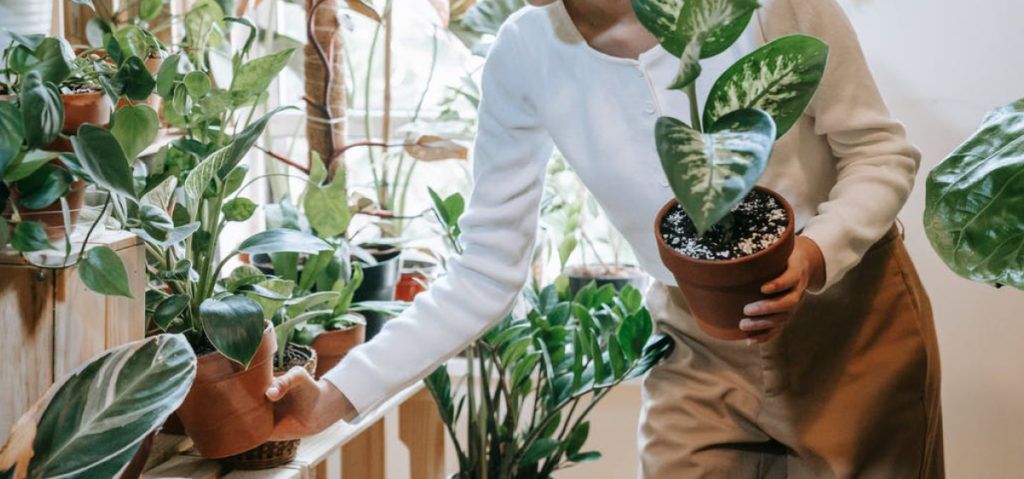
Like I said before, buying your first houseplant can be stressful. That’s because there are lots of things to think about.
Although this may be true of any type of purchase, it’s especially important with houseplants.
Why? Because houseplants have to live in your house. And if they’re not happy, they’re going to let you know.
Many beginners fail to make deliberate selections regarding the plants they can care for in their environment.
It’s easy to get sidetracked and star-struck, but you should always think practically.
Here’s a breakdown of the most important things to keep in mind when buying your first houseplant.
What types of lighting do you get every day?
We know that light is essential for your houseplants.
Therefore you want to first check what kind of light and how much light you get in your home.
Knowing what kind of light you get every day will help you choose a plant that will thrive in your home.
You can choose plants that need lots of light or are suitable for low-light environments based on the lighting situation in your home.
As an illustration, some plants like philodendrons need lots of light.
Others, like spider plants, are relatively low-light. It’s also worth noting that many houseplants require less light at night.
You can use a plant care app for Android or iOS to see exactly how much light your plant gets each day.
Check out this post that reviews the best light meter app for a houseplant in 2021 to help you get started.
What is the temperature and humidity like in your house?
Besides the light, the temperature and humidity in your house can help you choose the right houseplant for your space.
For example, certain plants perform well when the temperature is kept between 60°F and 80°F.
The same goes for humidity: Certain plants prefer a relative humidity of around 50-70%.
You can quickly check the temperature and humidity in your house with a hygrometer.
Because houseplants are sensitive to fluctuations in temperature and humidity, you want to make sure these factors remain stable in your home.
If it’s cold or humid where you live, you probably want to choose plants that are native to those regions.
How much space do you have in your house?
How much space you have in your house to grow your plants is another important consideration.
In general, you want to plant houseplants in a place where they can spread out and grow.
That way, they don’t compete for space with other plants on the windowsill or on the coffee table.
There’s nothing worse than buying a plant that can’t fit in your home.
One year from now, the little shrub you see at the nursery might be twice as big!
When choosing plants to bring home, it is crucial to pay attention to how the plant grows.
Make sure to check how big and large your houseplant can grow before you make your purchase.
How much money do you have available?
Although most houseplants are inexpensive, a few are more expensive due to buyers’ demand and inaccessibility.
What I would suggest to beginners is to set a budget and stick to it.
That way, you can focus on the plants that are right for you without feeling pressured to spend a ton of money.
Begin with a small amount you’re willing to spend to get a simple, low-maintenance houseplant.
Then, over time, you can add to your collection.
Consider them your trial houseplants, and gradually build up from there if that is what seems right for you.
How much attention can you devote to your houseplants?
Bringing a houseplant home is thrilling; nevertheless, many houseplant beginners forget the fact that they must maintain the plant alive by providing regular care!
Consider your own schedule and how much time you can devote to your new indoor plants before making a purchase decision.
Nor will your plant’s needs change over time, so you don’t want to buy a plant that requires a lot of maintenance when you have very little time to spare.
Plants that need little water or care are ideal for busy people with hectic schedules.
ZZ plants and Pothos, for example, are low-maintenance plants.
In fact, these are two of the best plants for people with hectic schedules.
On the other hand, plants like Calathea Network and Anthurium need more frequent attention.
Undeniably, these are beautiful plants, but they are not the best option for those with busy schedules.
When deciding how many plants to buy, you should also consider the amount of time you have available.
As you continue in your houseplant-growing endeavors, you’ll get a sense of how much time you have to dedicate to your plant babies.
Do you have pets in your house?
If you have pets in your house, you want to choose houseplants that are friendly to pets.
If you have a cat or dog, you’ll want to keep this in mind when you’re choosing houseplants.
Ingesting some plants may trigger a severe response in your pet’s digestive system, affecting them from mouth to stomach.
The American Society for the Prevention of Cruelty to Animals (ASPCA) website has further information on which plants are harmful to pets and which are not.
Where possible, I recommend that you check the toxicity of a plant before purchasing it.
How do you pick a plant in the nursery?
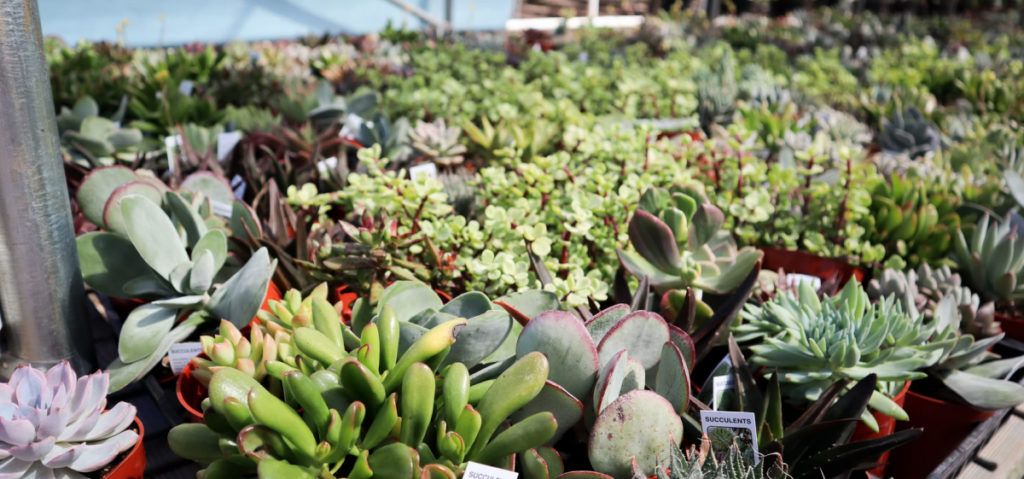
You’ll often find numerous pots of the same houseplant at nurseries.
You have a few options. So how do you pick the right plant for you?
There are several things to consider when selecting a houseplant.
I’ve compiled a list of some of the most important plant health characteristics to consider.
Strong and healthy leaves
When choosing an indoor plant for your house, you want to look for leaves that are thick and firm.
If a leaf is yellow or brown, it’s probably a sign of nutrient deficiency or disease.
In general, you want to avoid plants with leaves that are noticeably thin or curled.
A healthy plant has green, smooth, and glossy leaves. After all, you don’t want to bring home a sickly plant, do you?
If you’re not sure if a plant has leaves problems, take a quick look at the underside of a leaf.
If you see any kind of damage there, you should probably look for another plant.
When something is wrong with the plant, the leaves are frequently the first place a plant will express its distress.
Correct shape and strong stem
Pay attention to the overall shape and form of the plant.
Does the plant have the right amount of branching? Or is it leggy and lanky?
You also want to look for plants that have a strong stem. A robust and strong branch is a great sign of a healthy houseplant that’ll be able to sustain future growth.
Free of pests and diseases
Plants that are free of pests and diseases are usually healthier overall.
When you purchase a houseplant from a nursery, they’ll often give you a good look over the plant.
If they notice any pests or diseases, they’ll tell you.
Pests frequently enter our houses as a result of the addition of a new houseplant.
See if you can find any signs of pests on the veins or stem of your plants since these areas are common hiding places for these pesky insects.
It’s wise to inspect the plant yourself when you get it.
Moreover, It is also best to buy your plant from a trusted source (like a friend’s garden).
That way, you can make sure the plant is 100% pest-free.
The 5 best houseplants for beginner
When choosing the best houseplant for beginners, we want to look at plants that are relatively easy to take care of.
In other words, plants that don’t require a lot of water or nutrients.
The best houseplants for beginners can tolerate a wide range of conditions, including neglect, dry air and low light.
Definitely, no soil experience is needed! Here are my top five favorite houseplants for beginners:
Spider Plant
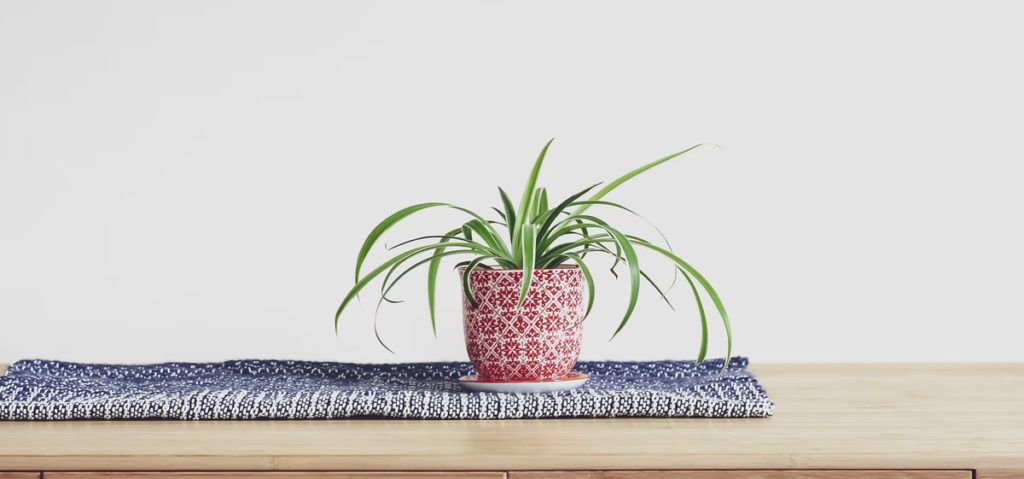
Spider plant is an excellent houseplant for beginners because it’s easy to grow and takes up little space.
They don’t require any special care, and they are not picky about their water, light or temperature level.
The spider plant is native to Western Africa but can now be found on every continent due to its popularity as an indoor houseplant.
It’s called “Spider Plant” because it has tiny white “spiders” on the ends of its long, green and purple vines that cling to objects and then shoot out roots.
The leaves are thick and dark with a silver or greyish sheen.
Read our spider plant care guide if you want to learn how to care for your spider plant.
Snake Plant
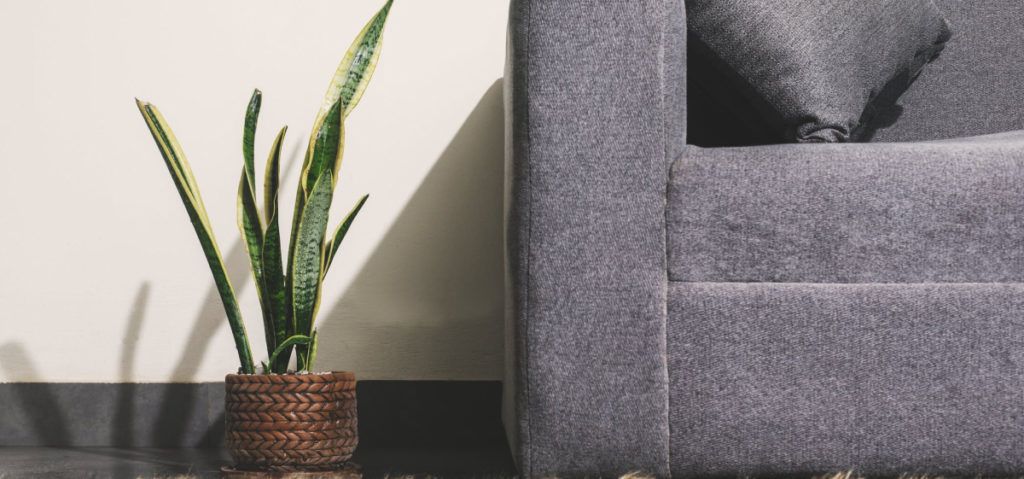
The snake plant is a large, leafy houseplant that can grow up to four feet tall.
It is a low-maintenance houseplant that does well in most lighting conditions and can grow to be three feet tall.
It has long, narrow leaves with short little spikes on the ends.
The snake plant can be grown outdoors in warmer climates and requires very little care.
The Sansevieria is a striking addition to any collection of houseplants.
It can handle less watering as long as it isn’t too much, and its tough leaves make the perfect office plant.
If you want to learn how to care for this plant, read our beginner snake plant care guide.
Golden Pothos
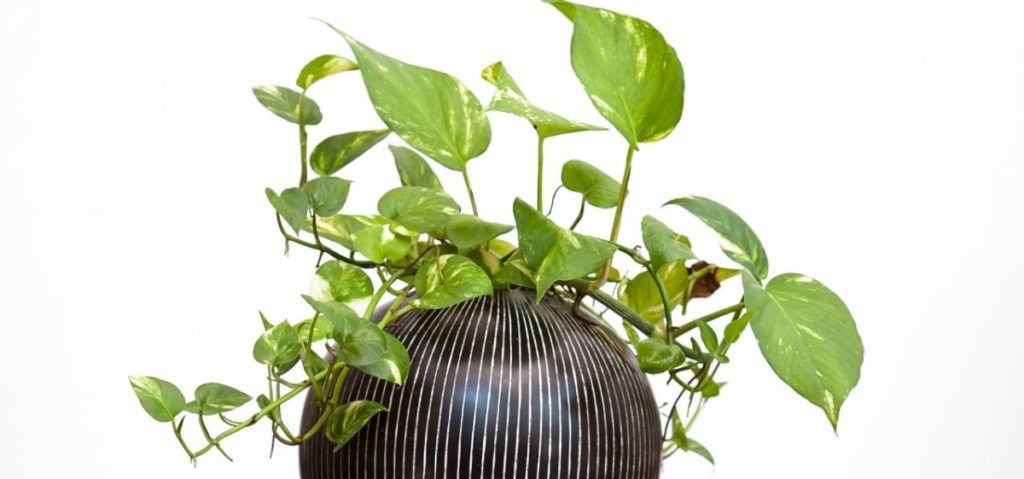
The best plants for beginners are any easy-care plant, such as the Golden Pothos. Most houseplants will require at least some degree of watering and sunlight on a regular basis.
Golden Pothos is an excellent plant for beginners to get into gardening. It requires only light maintenance throughout the year, and it’s easy to care for.
The Golden Pothos is an easy plant to grow indoors because it needs minimal watering and can thrive in low light.
This make a Golden Pothos perfect for someone who may not have much experience with plants or doesn’t have a lot of time to care for them.
It does well in most country regions and will bring beauty to any home or office setting.
The best thing about this houseplant is that it can grow in different types of soils, including clay or sand.
Read our golden pothos care guide for beginner to help you get started!
ZZ Plant
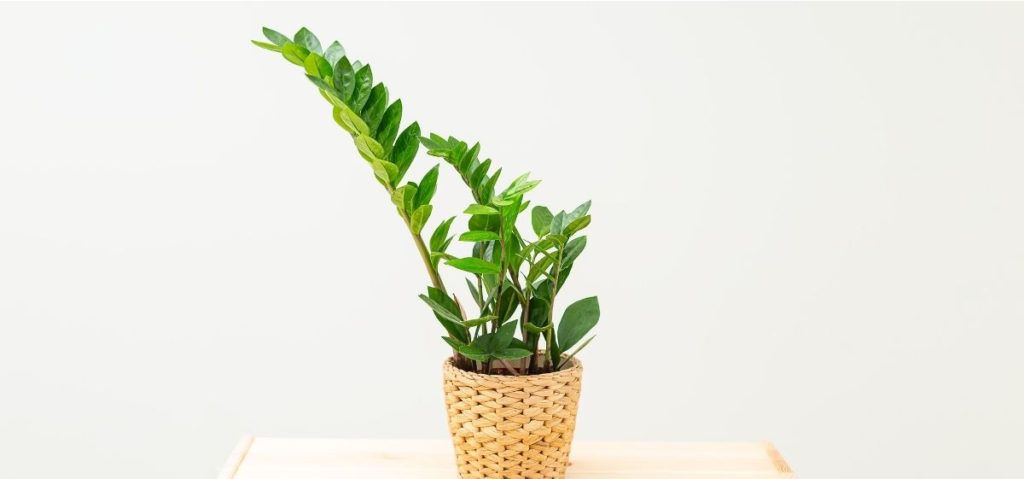
ZZ plants are common houseplants that can be found in homes all over the world.
They are well known for their ease of care and tolerance to low light conditions, making them perfect for new plant parents.
The ZZ plant is a reliable houseplant for beginners. It can withstand infrequent watering and dry air, making it suitable for low-light environments.
The ZZ plant’s attractive leaves are also perfect when grouped with other plants in the home or garden.
It’s easy to care for, and it won’t die on you! The ZZ plant is one of the best houseplants for beginners.
Go check out our ZZ plant care guide to learn how to care for a zz plant, a popular houseplant that is easy to grow and maintain.
Aloe Vera
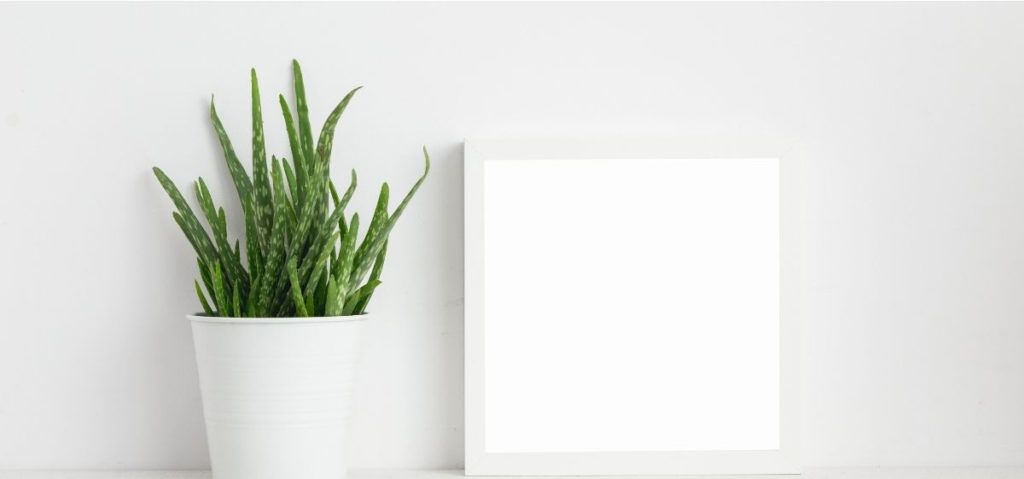
Aloe Vera is a succulent plant that has been used for centuries by ancient cultures to heal wounds and burns.
It is often used as an ingredient in cosmetic products, such as soaps and lotions.
The gel found inside the leaves of aloe vera plants is often used to treat minor burns, sunburns, acne scars and other skin conditions such as rosacea and psoriasis.
Aloe Vera plants are easy to care for and can thrive in many different environments.
The plant does not require much attention, but you must give them just enough water, so they don’t dry out or get too wet.
Frequently Asked Questions by New Plant Parent
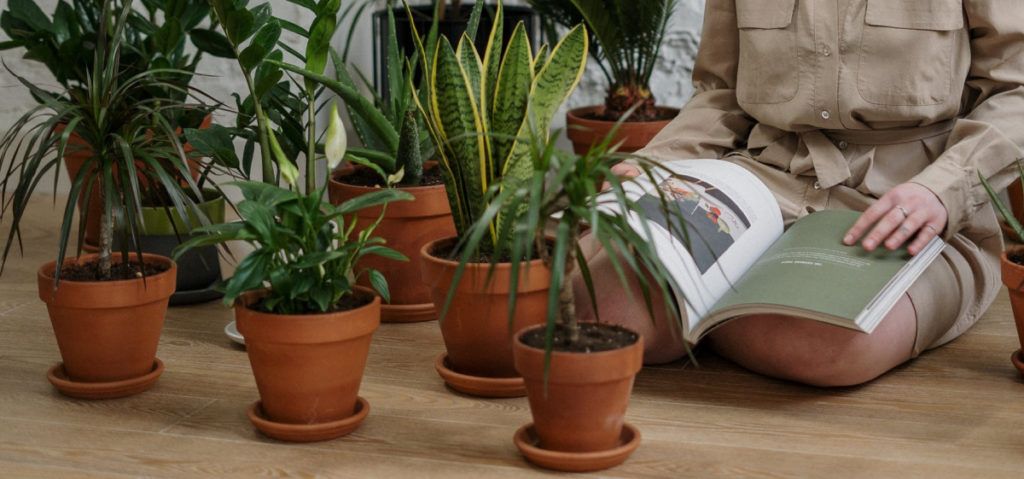
What is a good beginner houseplant?
A good beginner houseplant can withstand dry air, is easy to care for, and doesn’t have any known toxic or allergic reactions.
In addition to these basic requirements, you may also want to look for low-maintenance plants, easy to grow or have attractive foliage. Plus
Plus, a good beginner plant should be relatively inexpensive.
What is an excellent plant to start with?
An excellent plant to start with should be the one suited for your house, lifestyle and preference. It should be suitable for beginners if you don’t have any prior experience.
In addition to what I just mentioned, I personally recommend starting with a snake plant.
Not only is it great for beginners, but it’s one of the most popular houseplants today.
Snake plants are relatively easy to care for, don’t need much light, and are pretty resilient to dry air.
What is the easiest houseplant to care for?
Based on my experience, the easiest houseplant to care for is spider plant, zz plant, snake plant, golden Pothos, and aloe vera.
Well, basically the 5 I mentioned above. Those houseplants are low-maintenance, don’t require much water, and can tolerate dry air.
All you really need to do is give it regular water, keep it in a bright spot, and fertilize it once a month. That’s literally all there is to it.
Besides those, there are some relatively easy plants to care for, such as peace lilies.
Final Words
There you have it: my houseplant beginner guides to help new plant parent start their own houseplant journey.
Hopefully, the information here helped clear up any questions you may have about indoor plant care for beginners and help you start your own houseplant collection.
Now I’d like to hear from you:
Have you ever grown a houseplant before? If so, what was your experience? Good or bad?
Let me know by leaving a comment below. I’ll be around to personally reply to comments that come in.
For now, have a great day!